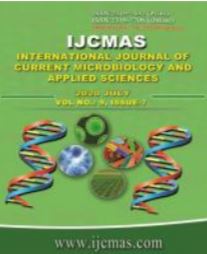


 National Academy of Agricultural Sciences (NAAS)
National Academy of Agricultural Sciences (NAAS)

|
PRINT ISSN : 2319-7692
Online ISSN : 2319-7706 Issues : 12 per year Publisher : Excellent Publishers Email : editorijcmas@gmail.com / submit@ijcmas.com Editor-in-chief: Dr.M.Prakash Index Copernicus ICV 2018: 95.39 NAAS RATING 2020: 5.38 |
Chickpea crop suffers due to the losses caused by various insect pests and diseases. It is attacked by eleven species of insect pests. Among these pests, the pod borer, Helicoverpa armigera (Hubner) (Lepidoptera: Noctuidae) is the most serious insect pest in most of the chickpea growing areas of the world. It damages leaves flowers and pods at different stages of growth and yield losses up to 50 per cent or even more, have been recorded due to the incidence of this pest. Several control measures, especially chemical insecticides, are applied to control this pest. Chemical means of plant protection causes several adverse effects like environment-pollution, pest resurgence, development of resistance in pests against insecticides. To avoid these problems, non-chemical pest control measures need to be promoted. Development and searching of resistant plant material is one of such methods.
 |
 |
 |
 |
 |